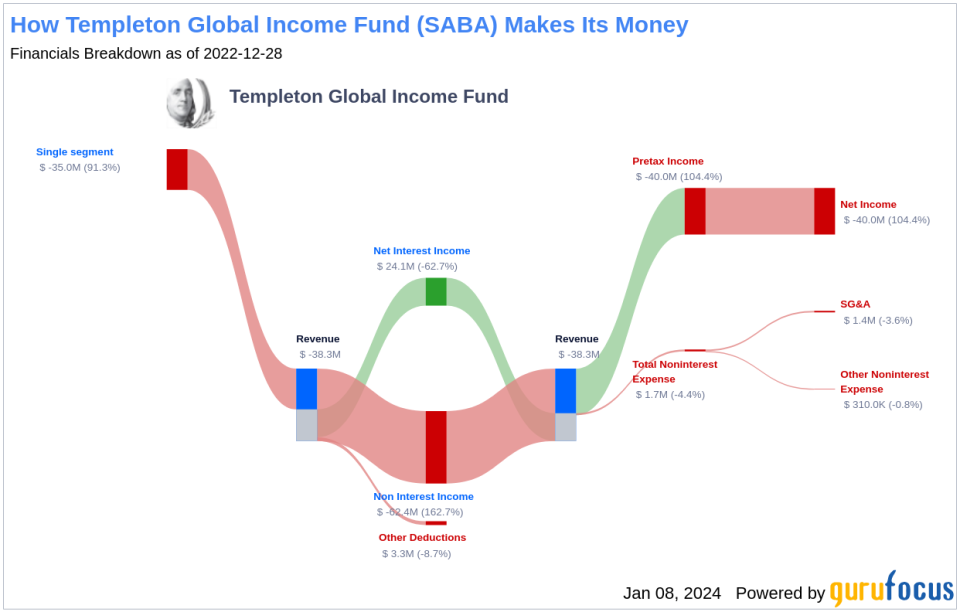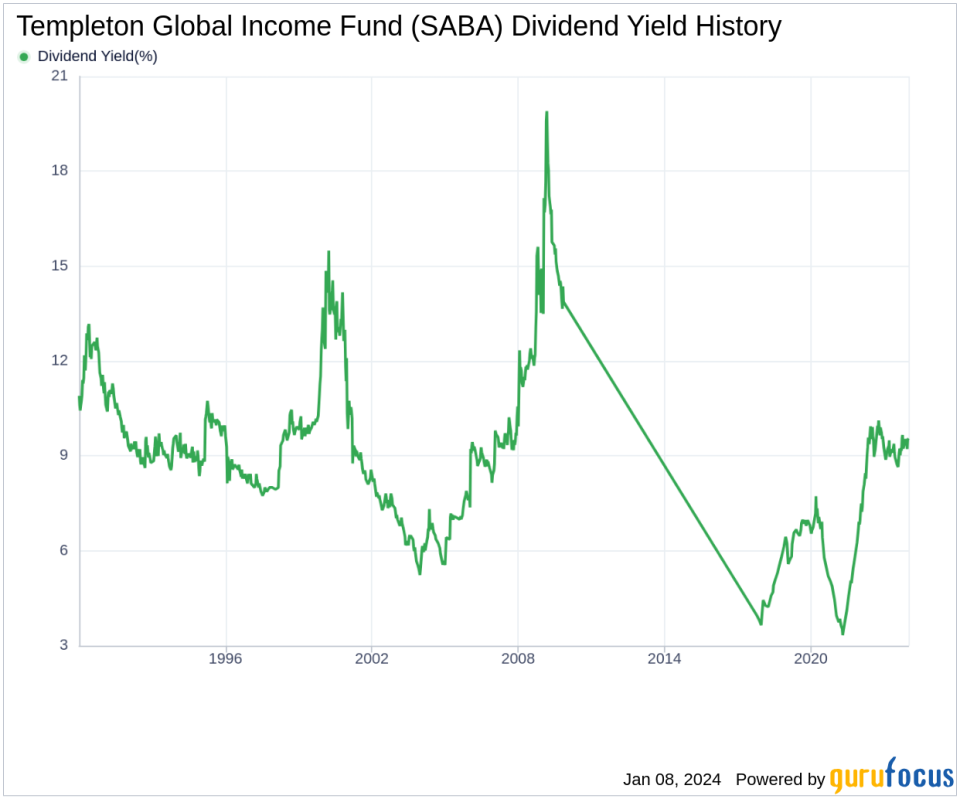Templeton Global Income Fund's Dividend Analysis
Assessing Templeton Global Income Fund's Dividend Sustainability
Templeton Global Income Fund (NYSE:SABA) recently announced a dividend of $0.03 per share, payable on 2024-01-31, with the ex-dividend date set for 2024-01-09. As investors look forward to this upcoming payment, the spotlight also shines on the company's dividend history, yield, and growth rates. Using the data from GuruFocus, let's look into Templeton Global Income Fund's dividend performance and assess its sustainability.
What Does Templeton Global Income Fund Do?
This Powerful Chart Made Peter Lynch 29% A Year For 13 Years
How to calculate the intrinsic value of a stock?
Templeton Global Income Fund is a closed-end fund. It seeks high current income, with a secondary goal of capital appreciation. Under normal market conditions, the Fund invests at least over 80% of its net assets in income-producing securities, including debt securities of the United States and foreign issuers, including emerging markets.
A Glimpse at Templeton Global Income Fund's Dividend History
Templeton Global Income Fund has maintained a consistent dividend payment record since 1988. Dividends are currently distributed on a monthly basis. Below is a chart showing annual Dividends Per Share for tracking historical trends.
Breaking Down Templeton Global Income Fund's Dividend Yield and Growth
As of today, Templeton Global Income Fund currently has a 12-month trailing dividend yield of 9.41% and a 12-month forward dividend yield of 9.02%. This suggests an expectation of decreased dividend payments over the next 12 months.
Over the past three years, Templeton Global Income Fund's annual dividend growth rate was -0.80%. Extended to a five-year horizon, this rate increased to 3.90% per year. Based on Templeton Global Income Fund's dividend yield and five-year growth rate, the 5-year yield on cost of Templeton Global Income Fund stock as of today is approximately 11.39%.
The Sustainability Question: Payout Ratio and Profitability
To assess the sustainability of the dividend, one needs to evaluate the company's payout ratio. The dividend payout ratio provides insights into the portion of earnings the company distributes as dividends. A lower ratio suggests that the company retains a significant part of its earnings, thereby ensuring the availability of funds for future growth and unexpected downturns. As of 2023-10-31, Templeton Global Income Fund's dividend payout ratio is 2.04, which may suggest that the company's dividend may not be sustainable.
Templeton Global Income Fund's profitability rank, offers an understanding of the company's earnings prowess relative to its peers. GuruFocus ranks Templeton Global Income Fund's profitability 2 out of 10 as of 2023-10-31, suggesting the dividend may not be sustainable. The company has reported net profit in 3 years out of the past 10 years.
Growth Metrics: The Future Outlook
To ensure the sustainability of dividends, a company must have robust growth metrics. Templeton Global Income Fund's growth rank of 2 out of 10 suggests that the company has poor growth prospects and thus, the dividend may not be sustainable.
Next Steps
In conclusion, while Templeton Global Income Fund has a long history of distributing dividends, its current payout ratio, profitability rank, and growth metrics raise questions about the sustainability of its dividend payments. Investors considering this stock for its dividend income should closely monitor these indicators. For those seeking to diversify their portfolio with high-dividend yield stocks, GuruFocus Premium users can utilize the High Dividend Yield Screener for more research and analysis.
This article, generated by GuruFocus, is designed to provide general insights and is not tailored financial advice. Our commentary is rooted in historical data and analyst projections, utilizing an impartial methodology, and is not intended to serve as specific investment guidance. It does not formulate a recommendation to purchase or divest any stock and does not consider individual investment objectives or financial circumstances. Our objective is to deliver long-term, fundamental data-driven analysis. Be aware that our analysis might not incorporate the most recent, price-sensitive company announcements or qualitative information. GuruFocus holds no position in the stocks mentioned herein.
This article first appeared on GuruFocus.


